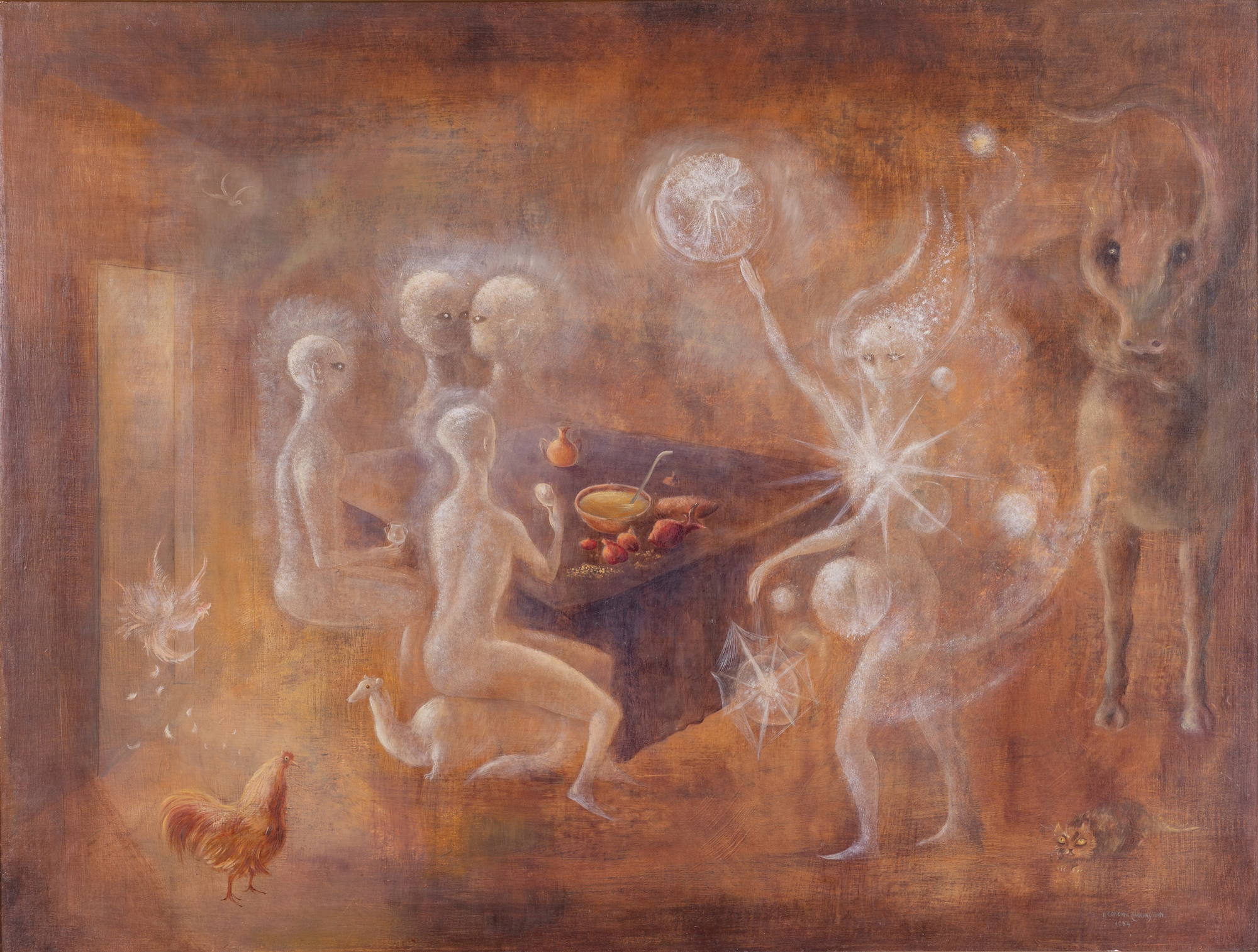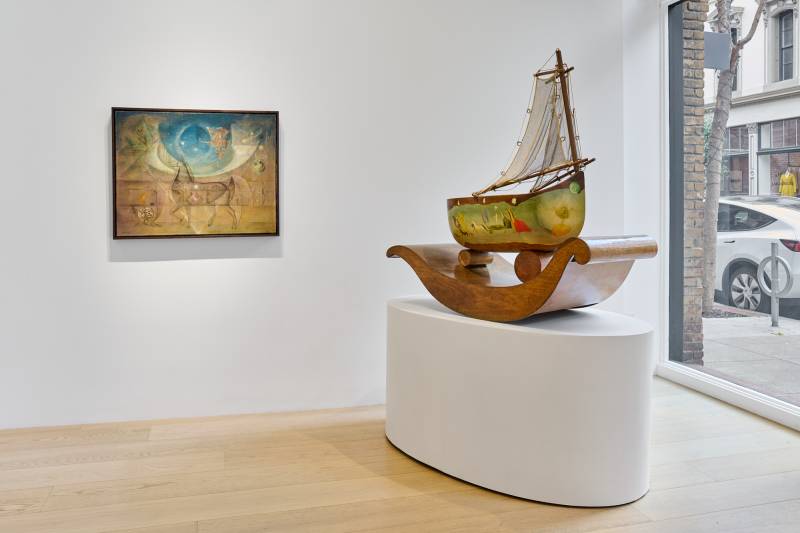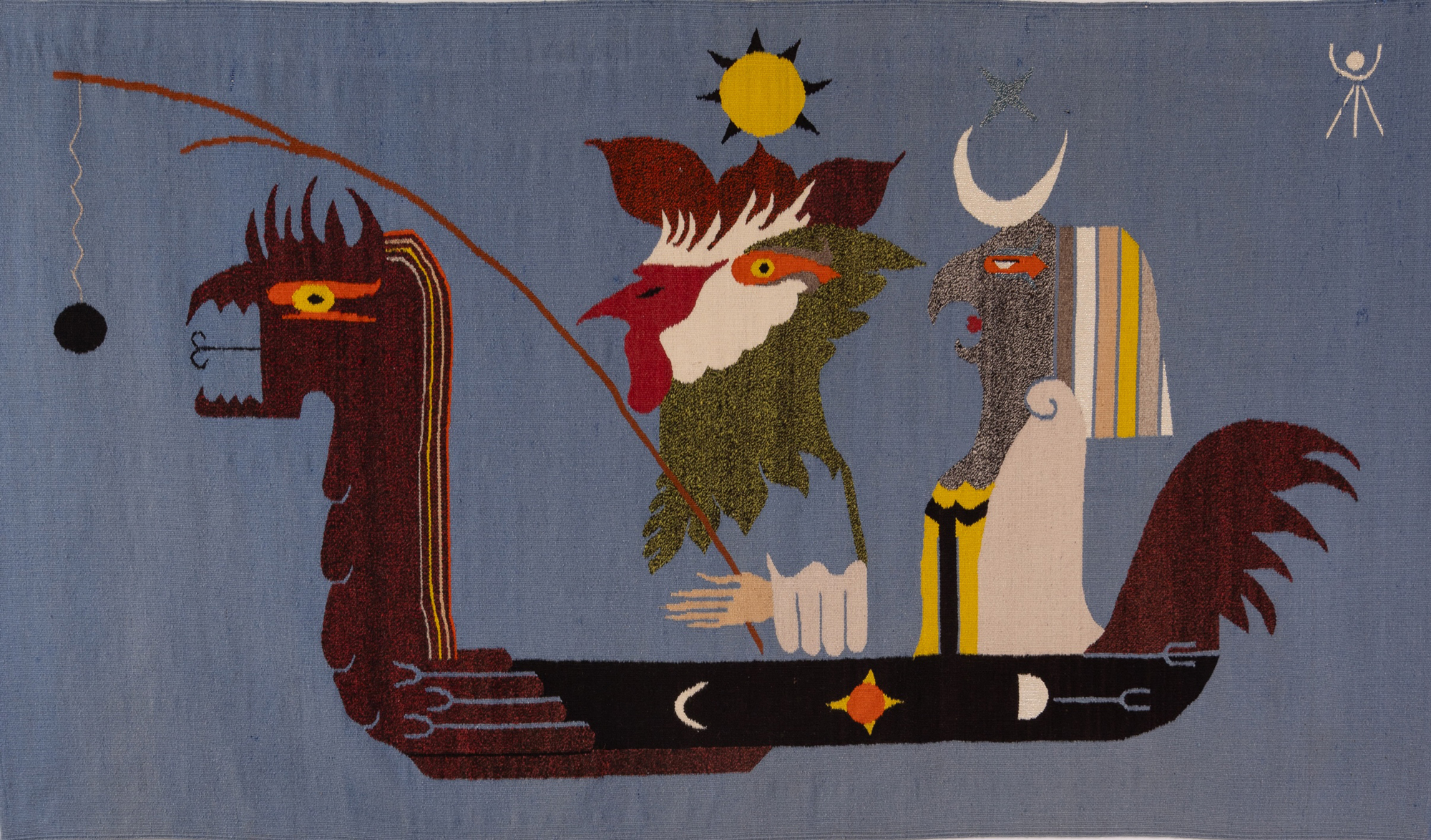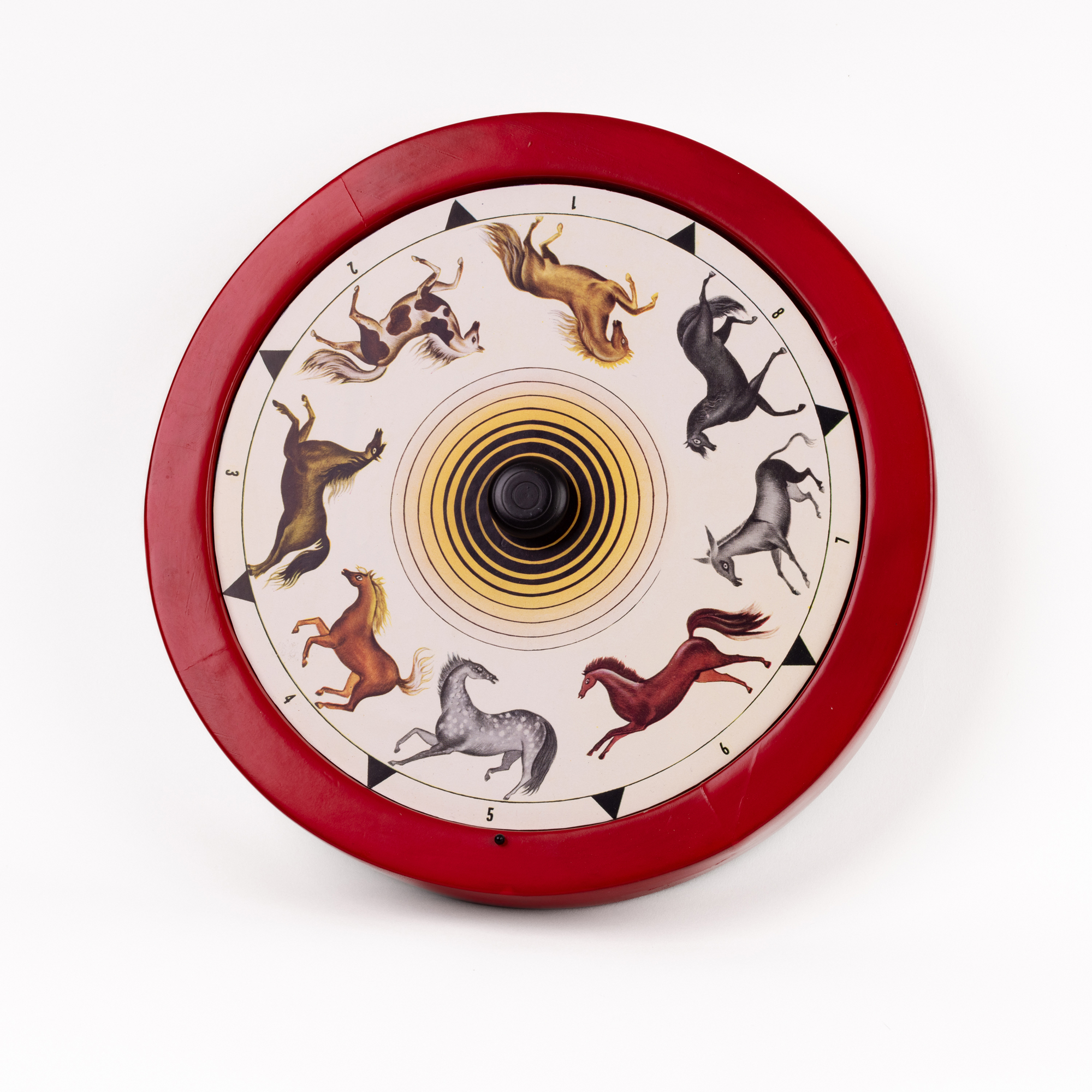Where do dreams come from? Questions about their origin are worth asking on occasion, especially when a sampling of the work of the prolific, late Surrealist artist Leonora Carrington (1917–2011) is on view at San Francisco’s Gallery Wendi Norris.
Even in a modern world filled with streams of amazing imagery coming from the likes of Disney, Studio Ghibli and AI-generated visuals, Carrington’s phantasms glow with illuminating persistence, emanating from a unique, focused and enduring intelligence. In the show Mythopoesis, on view through March 15, her work doesn’t simply present striking characters, it prompts cascades of thoughts about the very nature of dreaming.
Each artwork in this show — whether woven, carved, painted, or sketched — is rich in its own details and nuances, balancing the imaginary with the real. Alternate universes are populated by fantastic, half-familiar creatures who perform striking but just-recognizable rituals.

Picture the odd scene portrayed in the painting Sidhe, the White People of Tuatha dé Danann. Four ghostly humanoids circle a table as if sharing a small meal. Most guests are seated, but only on thick air. One rests on the back of a white goose, while another guest with a long white tail stands, juggling glowing white globes amid a vaporous cloud. A faint if full-bodied horse stares at the viewer, as if in a dream itself. The stark realism of colorful victuals on the table and a lively rooster wandering the floor emphasize the otherworldly quality of the rest of the surroundings.
Visions like this could be individually generated, springing full-blown from the artist’s mind and experiences. Or they may be drawn from a collective unconscious.




